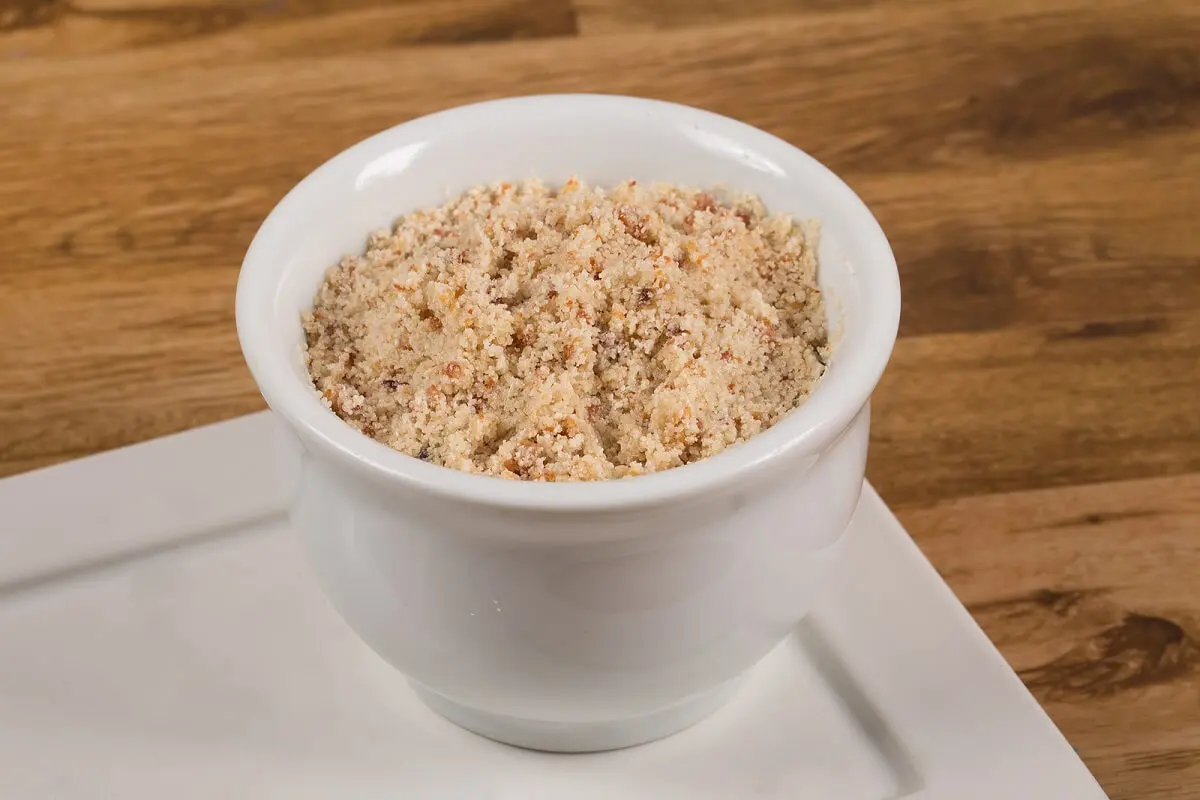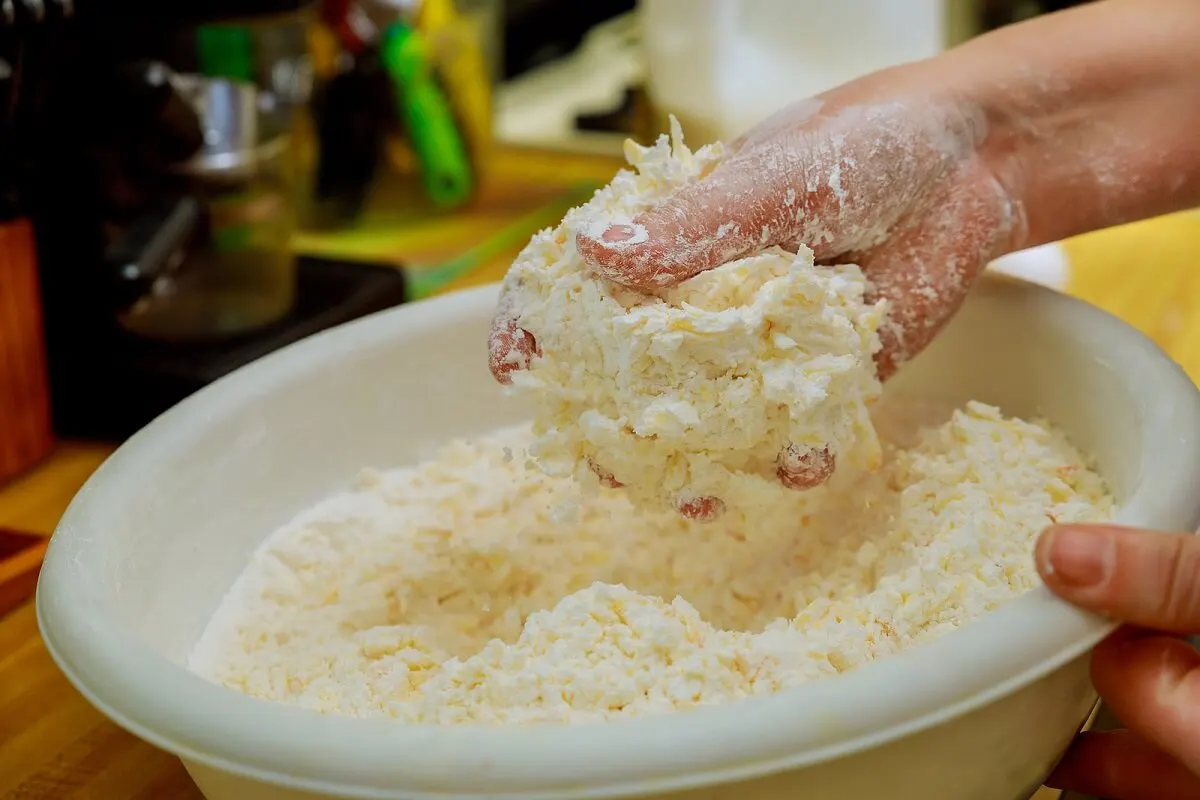Fariña: What It Is and How to Prepare It


Written and verified by the nutritionist Maria Patricia Pinero Corredor
Fariña is a form of ground wheat that’s considered a grain. It’s made from wheat germ, as well as the inner part of the grain called the endosperm. And although wheat is its raw material, it’s also a form of starch obtained from vegetables such as potatoes and cassava.
In particular, the wheat germ and the endosperm of the grain are ground together to a fine consistency and then sieved. So, what is its nutritional value? What are its benefits? Here are all the details!
What is fariña?
Obtained mainly from wheat, fariña is a grain that’s often considered a type of flour because of the fineness of the product. It can also be prepared from potatoes or cassava. It comes from South America, from countries such as Peru and Brazil.
When prepared from wheat, the endosperm and germ of the wheat are used. According to the Food and Agriculture Organization of the United Nations (FAO), the endosperm is the largest part, representing between 80 and 84% of the whole grain.
It’s usually the poorest part in proteins and minerals, although it is the main source of energy because it contains a lot of starch. Meanwhile, the germ corresponds to only 3% of the whole grain but has the unique trait of containing more protein (up to 30%).
As for fats, it contains 10% of the polyunsaturated type. In addition, it has a variety of vitamins, such as thiamine, riboflavin, pyridoxine, and niacin. Among its minerals are 8 milligrams of iron and almost 900 milligrams of potassium.
As for its sensory characteristics, fariña is usually sweet. When prepared, it’s usually viscous and whitish. It’s also soft.

We think you may be interested in reading this, too: Easy and Delicious Chicken in Black Sauce Recipe that Everyone Will Love
The nutritional value of fariña
Overall, the following values provided are calculated based on 100 grams of fariña:
- Carbohydrates: 73.2 grams
- Fiber: 4.2 grams
- Protein: 11.60 grams
- Sodium: 124 milligrams
- Water: 11.08 grams
- Calories: 360
- Fat: 1.41 grams
- Vitamin B-3: 13.7 milligrams
- Vitamin B-9: 121 milligrams
- Vitamin B-1: 1.00 milligrams
When preparing this ingredient, its nutritional value is similar to that of the parts of the wheat grain used to make it. According to the University of Nebraska, it’s recognized for its high content of B vitamins, carbohydrates, and calories.
Among the carbohydrates, resistant or non-digestible starch and insoluble and soluble fiber stand out. Some oligosaccharides and sugars, such as glucose, are also found.
Its protein value is close to that of any grain and it has a good proportion of essential amino acids.
The nutritional benefits of fariña
The main benefit of this flour is its nutritional value, especially with regard to the contribution of carbohydrates and vitamins. We’ll explain what this means for health in more detail in the following section.
It strengthens the intestinal microbiota
Bacteria – known as intestinal flora – live in the intestine that protect the bodyfrom most diseases, among other things. When resistant starch reaches the colon, it’s fermented by the microbiota and generates gases such as methane, hydrogen, and carbon dioxide.
This whole process improves the flora and strengthens the intestinal barrier against most diseases that attack the digestive system. A study indicates that non-digestible starch regulates the composition of the microbiota, so it increases probiotics and decreases pathogenic bacteria.
It’s a good source of protein
Most of the protein in fariña comes from wheat germ. Its high protein value is due to the fact that the wheat plant is born from the germ. An article suggests that these proteins are of high nutritional quality.
In particular, they have a balanced and abundant composition of essential amino acids such as lysine, tryptophan, and methionine.
It provides essential fatty acids
Wheat germ is composed of 60% of polyunsaturated fatty acids. Of this percentage, 88 % are omega-6 and omega-3 fatty acids. It’s also notable for its high vitamin E content.
Polyunsaturated fats, together with monounsaturated fats, are the so-called “good fats,” since consuming them can bring health benefits. In fact, the body needs them for cell growth and production and for proper brain function.
The body doesn’t produce essential fatty acids, so they can only be obtained from food. Specifically, omega-6 fatty acids help control blood sugar, reduce the risk of diabetes, and regulate blood pressure.
Like this article? You may also like to read: Recipe of Panamanian Chocao, a Delicious Dessert Made with Bananas
It contains B vitamins
B vitamins are of great importance to the body. Vitamin B3 and vitamin B1 in fariña help in the metabolism of nutrients to convert them into energy. They are also involved in the functions of the nervous and digestive systems.
It’s also a source of vitamin B9, known as folic acid. This helps the body in collaboration with other vitamins to form tissues and cellular growth. It even plays a role in the creation of new proteins and in the formation of red blood cells.

How to prepare fariña
Fariña is usually prepared as a side dish, breakfast, mid-afternoon snack, or even dinner. Its preparation is similar to that of oatmeal. It is cooked with milk, sugar, and spices. The result is a product similar to pudding in consistency. If you’d like, it can also be made with vegetable kinds of milk.
Although some people eat it on its own, it can be combined with cereals, berries, cinnamon, and cloves, among other ingredients. In fact, it has other uses as a thickener and as a substitute for wheat flour in preparations such as pizza and pasta.
However, it is a source of gluten. Therefore, it’s not suitable for patients with celiac disease, intolerance, or those who are following gluten-free diets. In these cases, it’s advisable to consult a nutritionist for other options.
All cited sources were thoroughly reviewed by our team to ensure their quality, reliability, currency, and validity. The bibliography of this article was considered reliable and of academic or scientific accuracy.
- Martínez I, Kim J, Duffy P, Schlegel V, Walter J. Los almidones resistentes tipos 2 y 4 tienen efectos diferenciales en la composición de la microbiota fecal en sujetos humanos. PLoS Uno 2010; 5: e15046.
- Guadalupe Chaquilla-Quilca, René Renato Balandrán-Quintana, Ana María Mendoza-Wilson, Jorge Nemesio Mercado-Ruiz. Propiedades y posibles aplicaciones de las proteínas de salvado de trigo. BIOTECNOLOGÍA Y CIENCIAS AGROPECUARIAS. ISSN 2007-7521. 12(2): 137-147 (Ene – Jun 2018)
- FAO. Cereales, raíces feculentas y otros alimentos con alto contenido de carbohidratos. https://www.fao.org/3/w0073s/w0073s0u.htm#:~:text=El%20endospermo%2C%20aunque%20en%20general,un%20carbohidrato%20complejo%2C%20el%20almid%C3%B3n.
- Meagan Bridges. Realidades acerca de las grasas poliinsaturadas. 5/26/2020. MedLine plus. https://medlineplus.gov/spanish/ency/patientinstructions/000747.htm
This text is provided for informational purposes only and does not replace consultation with a professional. If in doubt, consult your specialist.








